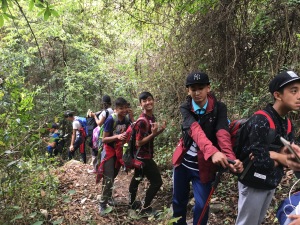Guest Editor: Bertram (Chip) Bruce
Editor of Schools: Studies in Education: Andy Kaplan
In an age of climate disasters, extreme income inequality, conspiracy theories, anti-democratic movements, segregated schooling, pandemic, and more, the need for democratic education has never been greater, but it may also seem less viable than ever. Classics such as John Dewey’s Democracy and Education are still relevant, but invite us to re-invent education for today.

The symposium
Schools: Studies in Education, published by the University of Chicago Press, is hosting a symposium on this topic to celebrate the journal’s twentieth anniversary. The mission of Schools is to present inquiry into the subjective experience of school life. Unique among academic journals of education, Schools features articles by and about the daily life of classrooms, descriptions and reflections on the meaning of what happens when learning actually occurs.
To celebrate our twentieth year of publication, this symposium shares ways to think about democratic education in today’s world, and how we should plan for the future. How should issues such as indigenous people’s rights, racism, women’s rights, authoritarian governments, the concentration of wealth, the climate crisis, pandemics, and more make us analyze, discuss, and work to create democratic education?
We highly encourage submissions from classroom educators at all levels, from educators outside the United States, and from educators associated with alternative schools or informal learning.
Our initial call for papers in February 2022 led to proposals by almost 40 educators from all over the world. We held two zoom workshops for contributors over the past summer, which led to exciting manuscript submissions. The submissions include articles about teacher education, a ninth grade program devoted to the dreams and hopes of its students, an after school leadership program for Black teenagers, and a social justice program for pregnant and parenting teenagers. Some or all of these articles will likely appear in the first of what promises to be a robust series of an ongoing symposium.
Manuscript preparation
Interested authors should submit a one-page prospectus describing what their project entails. This is to determine appropriateness and balance for the special issue. We anticipate a mix of empirical and theoretical contributions. Completed manuscripts will undergo the usual Schools: Studies in Education review process before final acceptance.
Articles should be a maximum of 8000 words (25 double-spaced pages). Please follow the Schools style guide.
There is a possibility of a follow-on book publication based on revised versions of the articles, after publication in Schools.
Deadlines
For consideration in the Fall 2023 publication:
- December 15, 2022: one-page prospectus for your proposed article
- January 15, 2023: response to the prospectus
- April 15, 2023: final manuscript deadline
- May 1, 2023: editors’ review of the manuscript sent to author
- June 1, 2023: outside review of the manuscript
- July 1, 2023: final revised copy
For consideration in the Spring 2024 publication:
- February 15, 2023: one-page prospectus for your proposed article
- March 15, 2023: response to the prospectus
- October 15, 2023: final manuscript to be considered for the Spring 2024 issue
- October 31, 2023: editors’ review of the ms.
- November 30, 2023: outside review of the ms.
- December 31, 2023: final, revised copy






























